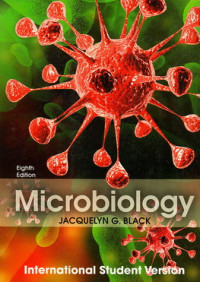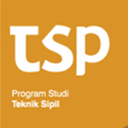Text
Microbiology : international student version
The development of microbiology—from Leeuwenhoek's astonished observations of "animalcules," to Pasteur's first use of rabies vaccine on a human, to Fleming's dis¬covery of penicillin, to today's race to develop an AIDS vaccine is one of the most dramatic stories in the history of science. To understand the roles microbes play in our lives, including the interplay between microorganisms and humans, we must examine, learn about, and study their world—the world of microbiology.
Microorganisms are everywhere. They exist in a range of environments from mountains and volcanoes to deep-seas vents and hot springs. Microorganisms can be found in the air we breathe, in the food we eat, and even within our own body. In fact, we come in contact with countless numbers of microorganisms every day. Although some microbes can cause disease, most are not disease produc¬ers; rather they play a critical role in the processes that provide energy and make life possible. Some even pre¬vent disease, and others are used in attempts to cure dis¬ease. Because microorganisms play diverse roles in the world, microbiology continues to be an exciting and criti¬cal discipline of study. And because microbes affect our everyday lives, microbiology provides many challenges and offers many rewards. Look at your local newspaper, and you will find items concerning microbiology: to men¬tion a few, reports on diseases such as AIDS, tuberculosis, and cancer; the resurgence of malaria and dengue fever, or "new" diseases.
For example the current public health problem with people dying of Listeria infections gotten from cantaloupes, can be prevented. Chapter 1 describes an anti-Listeria bacteriophage product licensed by the U.S. government, which kills all Listeria on the surface of cut
Ketersediaan
Informasi Detail
- Judul Seri
-
-
- No. Panggil
-
616.01 Bla m
- Penerbit
- Singapura : Wiley., 2013
- Deskripsi Fisik
-
xxii, 833 hal. : il. ; 28 cm.
- Bahasa
-
English
- ISBN/ISSN
-
9780470646212
- Klasifikasi
-
616.01
- Tipe Isi
-
-
- Tipe Media
-
-
- Tipe Pembawa
-
-
- Edisi
-
Ed. VIII
- Subjek
- Info Detail Spesifik
-
-
- Pernyataan Tanggungjawab
-
-
Versi lain/terkait
Tidak tersedia versi lain
Lampiran Berkas
Komentar
Anda harus masuk sebelum memberikan komentar

 Karya Umum
Karya Umum  Filsafat
Filsafat  Agama
Agama  Ilmu-ilmu Sosial
Ilmu-ilmu Sosial  Bahasa
Bahasa  Ilmu-ilmu Murni
Ilmu-ilmu Murni  Ilmu-ilmu Terapan
Ilmu-ilmu Terapan  Kesenian, Hiburan, dan Olahraga
Kesenian, Hiburan, dan Olahraga  Kesusastraan
Kesusastraan  Geografi dan Sejarah
Geografi dan Sejarah  Akuntansi
Akuntansi  Penelitian
Penelitian  Teknik Sipil
Teknik Sipil  Teknik Mesin
Teknik Mesin